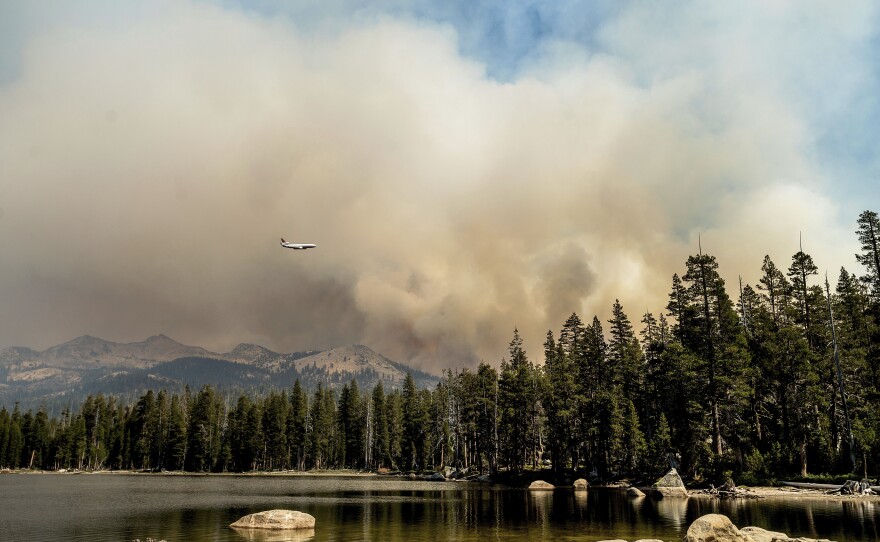Better weather on Thursday helped the battle against a huge California forest fire threatening communities around Lake Tahoe, but commanders warned firefighters to keep their guard up against continuing dangers.
Strong winds that drove the Caldor Fire east through high elevations of the Sierra Nevada for days had faded after forcing thousands of people to flee, but very localized gusts were likely and the forest remained extremely dry even though humidity levels had improved slightly, officials said at a morning briefing.
“We lost the winds aloft,” incident meteorologist Jim Dudley said. “It’s a good day today to not have gusty winds up on the ridges. What we are going to have are terrain-driven winds” that happen as the sun heats the ground.
The Caldor Fire covered more than 328 square miles (849 square kilometers) and was 25% contained early Thursday. Its northeast tip was south of the city of South Lake Tahoe and nearing the California-Nevada state line.
Fire crews from around the country were joining the fight against the fire, which was just 23% contained after destroying at least 700 homes and other buildings since it broke out on Aug. 14.
Climate change has made the West much warmer and drier over the past 30 years and will continue to make weather more extreme and wildfires more frequent, destructive and unpredictable, scientists have said.
The Caldor Fire, named after the road where it started, threatened at least 33,000 more homes and structures. On Wednesday, firefighters were ferried by boat to protect cabins at Echo Lake, a few miles south of Tahoe.
Heavenly Mountain Resort, Tahoe’s largest ski area, was being used as a staging area by firefighters. The resort also brought out its big guns — snow-making devices that were being used to hose down buildings.
One spur of the fire was about 3 miles (5 kilometers) south of the recently evacuated city of South Lake Tahoe and was heading northeast toward the California-Nevada state line, authorities said.
Crews worked to keep flames away from urban communities, where houses are close together and shopping centers, hotels and other structures would provide even more fuel for the fire.
Thick smoke has enveloped South Lake Tahoe, which is all but deserted at a time when it would normally be swarming with tourists.
After casinos and stores closed on the Nevada side of Lake Tahoe on Wednesday morning, evacuation holdouts who didn't have cars lined up outside the Montbleu resort and casino in Stateline, waiting for a bus to take them to Reno.
Kevin O’Connell, a disabled plumberSouth Lake Tahoe resident wearing ski goggles to protect his eyes from blowing ash, had planned on staying and riding out the evacuation order in Stateline but found out that stores had closed.
“I called 911 and told them I need to get out of here — I have no food, no cigarettes and I’m disabled. And within a couple hours, the police came and picked me up in my apartment and brought me here,” he said.
President Joe Biden on Wednesday issued a federal emergency declaration and ordered federal assistance to supplement state and local resources for firefighting efforts and relief for residents in four counties affected by the fire.
More than 15,000 firefighters, with help from out-of-state crews, were battling dozens of California blazes, including another monstrous blaze in the same area.
Maj. Gen. David Baldwin, adjutant general of California, said the state has also deployed more than 1,000 National Guard soldiers, airmen and sailors and that 10 other states have sent around 1,250 additional Guard members.
Many of the guard units are providing air support, including 23 aircraft, some equipped with water buckets and others with systems that can drop fire retardant.
About 65 miles (105 kilometers) north of the Lake Tahoe-area blaze, the Dixie Fire is the second-largest wildfire in state history at about 1,320 square miles (3,415 square kilometers). The weeks-old fire prompted new evacuation orders and warnings this week and was just over 50% contained.






